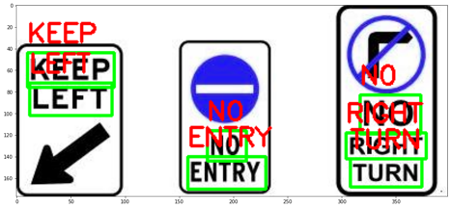
All of the above mentioned models are open-sourced and the codes are available in the GitHub repository, i.e. Besides, the proposed PP-OCR are also verified in several other language recognition tasks, including French, Korean, Japanese and German. Meanwhile, several pre-trained models for the Chinese and English recognition are released, including a text detector (97K images are used), a direction classifier (600K images are used) as well as a text recognizer (17.9M images are used). The corresponding ablation experiments with the real data are also provided. We introduce a bag of strategies to either enhance the model ability or reduce the model size. The overall model size of the PP-OCR is only 3.5M for recognizing 6622 Chinese characters and 2.8M for recognizing 63 alphanumeric symbols, respectively. In this paper, we propose a practical ultra lightweight OCR system, i.e., PP-OCR. However, OCR is still a challenging task due to the various of text appearances and the demand of computational efficiency.
JAPANESE OCR SYMBOLS MAC
PS - If you open your original document in Adobe Reader (or Mac Preview) and attempt to copy and paste the same text, you will probably run into the same issues. If the text does not paste as gibberish, please send your document to our support staff and we'll get back to you with a more detailed analysis.The Optical Character Recognition (OCR) systems have been widely used in various of application scenarios, such as office automation (OA) systems, factory automations, online educations, map productions etc. Finally, there has been a major improvement.

I make the problem right by training heart symbols. Originally, the entire sentence gets weird, once Tesseract runs into heart symbols. Once you enable this option, all newly uploaded documents will be sent to our OCR engine and the text should show up correctly. Now, this trainenddata is able to recognize the heart symbols. The new file will contain an image of your original document alongside a new (invisible) text layer with a correct character encoding. This means that we create a completely new text document based on the visual appearance of your original file. Setting this option to "Yes - always perform OCR" will convert your documents to an image file and then apply Optical Character Recognition (OCR).

To fix unreadable text issues, go to the Preprocessing settings inside of your Document Parser (SETTINGS > PREPROCESSING) and set the option "Perform OCR" to " Yes - always perform OCR" as shown in the screenshot below.

In either way, it is unfortunately technically not possible to simply "fix" the document and restore the original text. Luckily, there is a work-around in Docparser that will give you near-perfect results.

Lastly, it is also possible that Optical Character Recognition (OCR) with low accuracy was applied to your document before uploading it to Docparser. Another common reason is that the character mapping information was deliberately obfuscated as a protection mechanism to prevent the reader to "copy & paste" the text data. The reason for this can be that the document was produced incorrectly.
JAPANESE OCR SYMBOLS PDF
More specifically, your PDF document is probably missing important information about font character mapping. Some imported PDF documents may return garbled text when you view them in the parsing rule editor or process them with existing parsing rules. When you see unreadable gibberish symbols as shown in the screenshot below, you are likely dealing with a corrupted PDF file. What to do when a PDF document is converted to garbled characters and symbols?


 0 kommentar(er)
0 kommentar(er)
